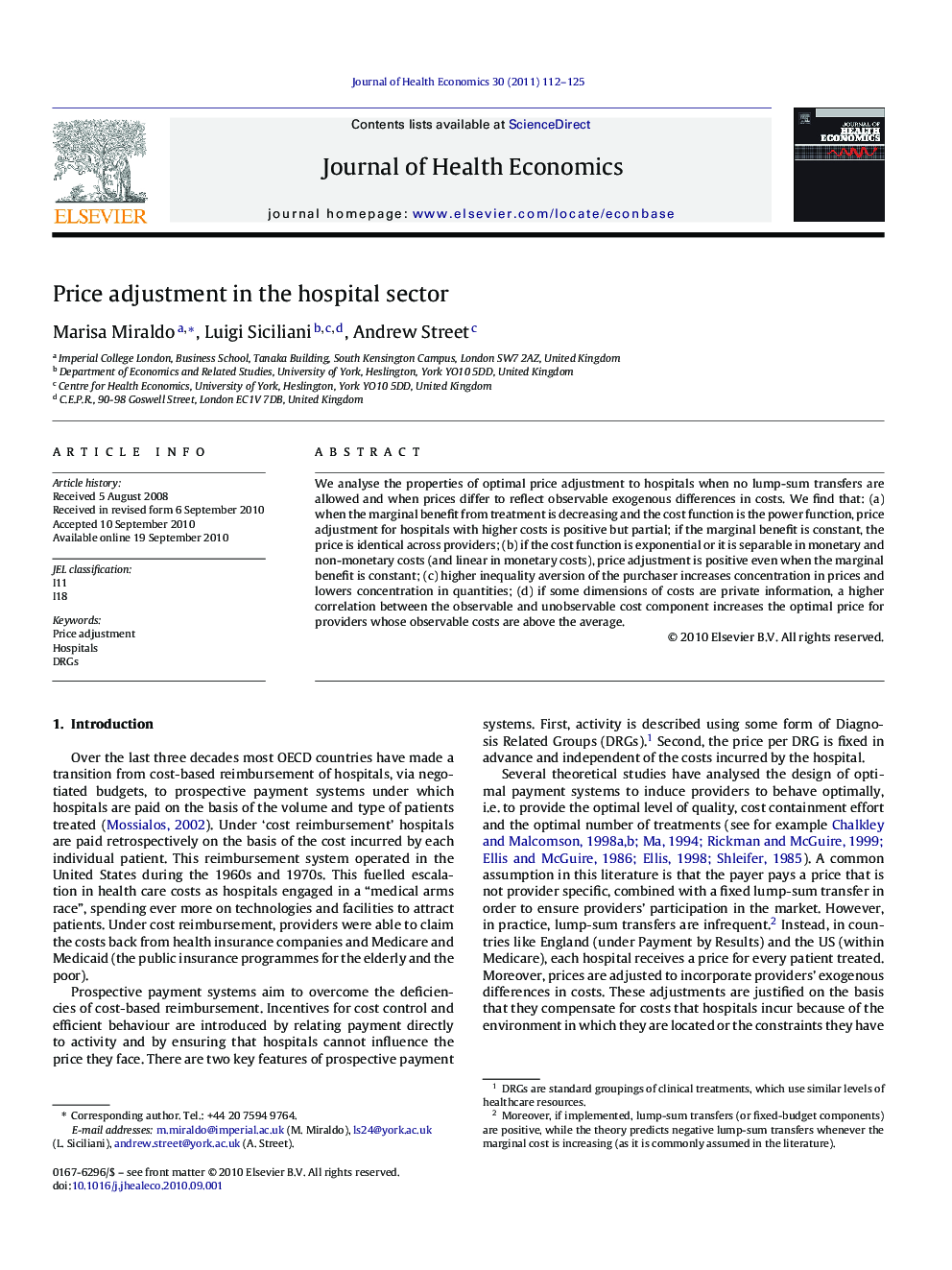| Article ID | Journal | Published Year | Pages | File Type |
|---|---|---|---|---|
| 961859 | Journal of Health Economics | 2011 | 14 Pages |
Abstract
We analyse the properties of optimal price adjustment to hospitals when no lump-sum transfers are allowed and when prices differ to reflect observable exogenous differences in costs. We find that: (a) when the marginal benefit from treatment is decreasing and the cost function is the power function, price adjustment for hospitals with higher costs is positive but partial; if the marginal benefit is constant, the price is identical across providers; (b) if the cost function is exponential or it is separable in monetary and non-monetary costs (and linear in monetary costs), price adjustment is positive even when the marginal benefit is constant; (c) higher inequality aversion of the purchaser increases concentration in prices and lowers concentration in quantities; (d) if some dimensions of costs are private information, a higher correlation between the observable and unobservable cost component increases the optimal price for providers whose observable costs are above the average.
Keywords
Related Topics
Health Sciences
Medicine and Dentistry
Public Health and Health Policy
Authors
Marisa Miraldo, Luigi Siciliani, Andrew Street,
